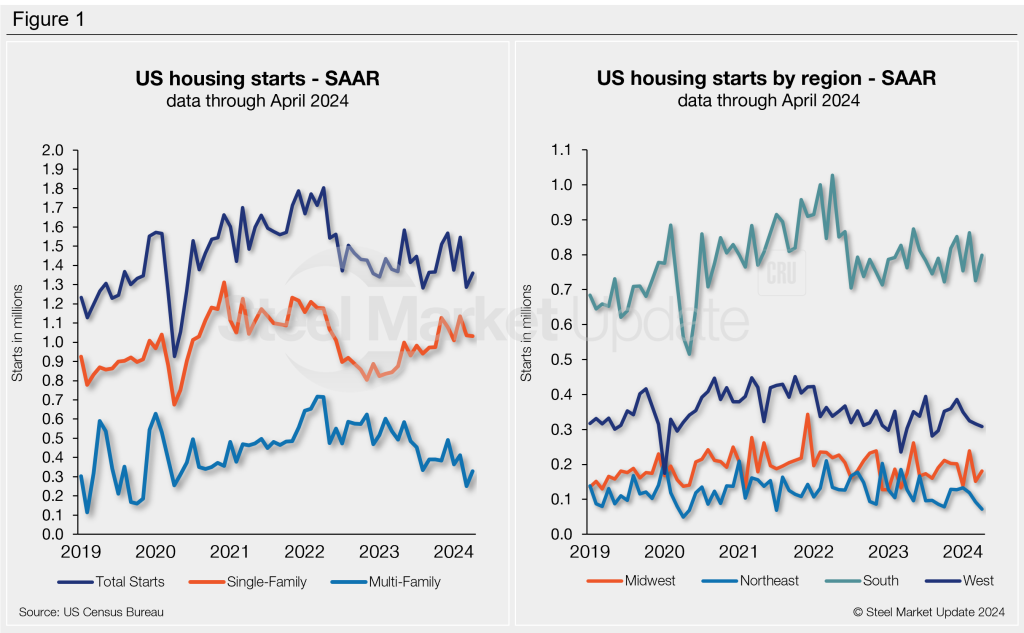Market Data

May 17, 2024
Housing starts increase in April but remain muted
Written by Brett Linton
US housing starts ticked up through April following March’s dip, according to the latest data release from the US Census Bureau.
Total housing starts stood at a seasonally adjusted annual rate (SAAR) of 1.36 million units in April, a 6% increase from the multi-year low seen one month prior. Excluding March, the last time total housing starts were this low was last August at 1.31 million units.
At the same time, the overall number of privately owned housing units authorized by building permits fell 3% from March to April to a SAAR of 1.44 million units. Single-family building permits were 1% lower m/m at 976,000 units. Multi-family permits eased 7% from March to 464,000 units.
Single-family starts
Single‐family starts in March totaled 1.03 million units, down less than 1% from the upwardly revised February figure of 1.04 million units. Multi-family starts rebounded 31% month on month (m/m) to 322,000 units.
“While the start of the year has seen an expansion for single-family home building because of a lack of existing home inventory, home building activity leveled off in April…,” said Carl Harris, chairman of the National Association of Home Builders (NAHB) in a statement. He attributed this stabilization to higher interest rates, tighter lending conditions and lower home building sentiment on new construction.
Regional starts
Regionally, total housing starts were mixed across the nation from March to April. In the Northeast we saw a 23% reduction m/m, as well as a 3% decline in the West. The Midwest witnessed an increase of 19% m/m, as did the South, rising 10%.

For a history of monthly housing start and building permit figures, visit the Housing Data page on our website.







